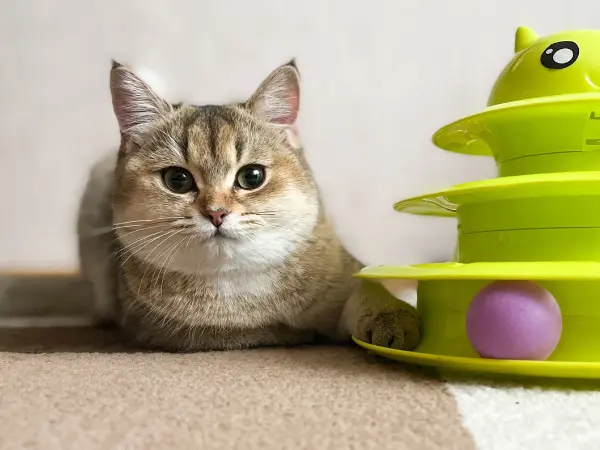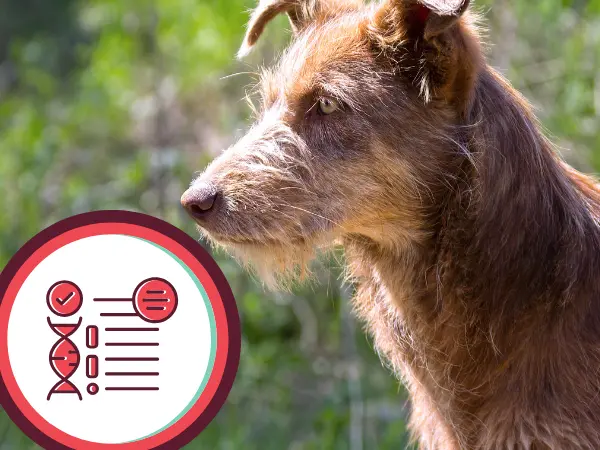Cats are masters at concealing discomfort and pain, often making it challenging to detect when they're in distress. However, recognizing the subtle signs of cat pain is crucial for providing timely care, especially when a sick visit or urgent veterinary care is needed.
In this guide, we will explore the telltale physical and behavioral signs of cat pain that can help every cat parent identify when their beloved pet may be experiencing discomfort or pain.
Overview - Signs of Cat Pain
- Cats often hide their pain, so the signs may be subtle.
- Pain in cats can appear as physical symptoms or changes in behavior.
- If you suspect your cat is in pain, contact a veterinarian promptly for urgent vet care.

Physical Signs of Cat Pain
1. Limping or Favoring Limbs
Limping or favoring certain limbs when walking is one of the most noticeable signs that cats are in pain. This behavior is a natural response to discomfort or injury. Limping or avoiding putting weight on a painful limb helps reduce further damage and discomfort. Limping is a sign of cat pain that is most often associated with soft tissue injuries, fractures, or arthritis.
2. Altered Posture
Another sign of cat pain is altered posture. Cats change their posture when in pain as a way to cope with discomfort. Common signs of pain include hunched or tense body posture, where they may arch their back or keep it rigid.
Typically, a hunched or crouched posture is linked to pain in the cat’s abdomen. They may appear to be protecting their abdomen or curling into a ball. This is a cat's “stomach pain position”. It can be caused by injury, gastrointestinal issues, and other causes of cat abdominal pain (e.g. pancreatitis, parasitic infections, kidney disease).
3. Changes in Breathing
Cats can exhibit changes in breathing when they are in pain — whether it’s rapid breathing (aka tachypnoea) or labored breathing (dyspnea). While shallow, rapid breathing can be caused by exertion, low oxygen in the blood, respiratory issues, and stress, cats may also display shallow breathing when they are in pain. In line with this, shallow breathing that leads to panting is linked to higher levels of distress.
On the other hand, some cats may have slower, more labored breathing if the cat is experiencing respiratory or chest issues, which can also be linked to pain and distress.
4. Tail Position and Ears
Though tail and ear position can be influenced by different factors, these parts of a cat’s body can also show signs of cat pain.
When experiencing discomfort, stress, or pain, cats often tuck their tail tightly between their hind legs or hold their tail low and close to the body. This is a protective response to shield a vulnerable area.
When in pain, a cat’s ears may either be (a) facing forward and positioned more apart than usual or (b) flat against the head, pointing outward. This is based on the Feline Grimace Scale (FGS), which was developed by researchers at the University of Montreal.

Behavioral Signs Cats are in Pain
5. Changes in Grooming Habits
Typically, healthy cats thoroughly groom themselves, thus ensuring they have spotless and tidy fur. Changes in grooming behaviors can show signs cats are in pain. Cats may either groom excessively or less than usual when they experience pain.
While overgrooming can also be caused by stress or boredom, cats may groom excessively when in pain — oftentimes focusing on the painful area in an attempt to soothe it. Pain may not be on the skin itself; it can also come from within the body (e.g. soft tissue injuries, arthritis, internal organ problems).
Conversely, some cats may reduce grooming or avoid grooming altogether, especially if their pain makes it difficult to groom themselves like normal. This can lead to a disheveled appearance and matting of fur.
6. Decreased Activity
Decreased activity is one of the signs cats are in pain. When in pain, cats tend to become lethargic and less willing to engage in their usual activities. They may sleep more than usual and show reluctance to jump, climb, play, or move around.
Pain can make even simple movements uncomfortable, leading to a reduction in overall activity levels. This change is part of their natural instinct to conserve energy and protect themselves from further injury.
7. Changes in Appetite
Pain can affect a cat's appetite. They may eat less, take longer to eat, or refuse food altogether. Weight loss can be a result of decreased food intake due to pain. Cat pain may cause a decreased appetite, leading the cat to eat less or even refuse food altogether. This reduction in food intake is often a protective mechanism as the cat conserves energy and avoids exacerbating its discomfort
8. Vocalization
Cats vocalize for different reasons: kittens may vocalize when they are cold or hungry and older cats may vocalize when lonely or anxious. In some cases, vocalizations (or even the lack of a cat’s vocalizations) can be interpreted as signs cats are in pain, especially when co-occurring with other signs of cat pain.
Common signs of pain-related vocalization include increased meowing, yowling, or crying. Pain-related vocalizations are often more intense, and persistent, and may have an urgent tone. Some cats may also vocalize aggressively when touched (e.g. hissing, growling), especially if handled in areas of pain.
On the other hand, for some cats, instead of vocalizing more, they might become unusually quiet and withdrawn as they try to mask their discomfort.
9. Aggression or Irritability
Cats can become aggressive when in pain as a defensive response. This is a cat’s attempt to avoid touch, pressure, movement, or activities that may trigger or worsen their pain.
When touched, cats may lash out with aggression. They might hiss, growl, scratch, and bite as they try to protect the painful area of their body. Being in pain, for whatever reason, will also make the cat feel more stressed out and vulnerable.
10. Restlessness or Inability to Get Comfortable
Since cats sleep more than we do (12 to 16 hours), cat parents typically witness their feline family members go to sleep. This is where another one of the signs of cat pain can be observed. Cats in pain may have trouble finding a comfortable resting or sleeping position. They might constantly get up and shift positions or pace in an attempt to alleviate their discomfort.

What Should I Do If My Cat is in Pain
1. Observe and Document Symptoms
Pay close attention to your cat's behavior and physical symptoms. Note any changes in grooming, posture, activity level, or appetite. Documenting these observations can help your veterinarian make an accurate diagnosis.
2. Avoid Medications That Aren’t Prescribed By a Veterinarian
Self-medicating a cat in pain is risky due to potential misdiagnosis, improper dosages, and misuse of medicine. As long as the medication is not prescribed specifically for the cat in pain, it is possible that the cat will exhibit adverse reactions.
3. Handle the Cat with Care
As we mentioned earlier, cats in pain might exhibit more aggression, even toward their family. They might bite and scratch when handled. The latter could lead to incidents of cat scratch disease or other skin infections in people, so we recommend that pet parents handle a cat in pain with care and caution — and practice prompt wound cleaning in case cat scratching occurs
4. Consult a Veterinarian
The most crucial step to treating signs of cat pain is to consult with a veterinarian. Prompt veterinary care is needed to identify the root cause/s of the cat's pain symptoms, ensure safe treatment, and prevent further complications.

Final Thoughts on Cat Pain Symptoms
We hope you found this guide on recognizing signs of cat pain informative. As a final reminder, cats are experts at masking discomfort. Paying attention to even small changes in their behavior or body language can make a big difference.
If you observe any of the signs cats are in pain, we urge you to promptly reach out to a veterinarian.
Urgent Vet Care for Cats at Sploot Vets
In need of immediate care for your feline companion? Sploot Veterinary Care is here to assist you. Whether you suspect your cat is unwell or has suffered an injury requiring pet urgent care, contact our team at (720) 770-8656 for assistance over the phone—or to arrange an urgent drop-off at Sploot Veterinary Care.
We offer daily appointment slots, available within our extended vet clinic hours across all Sploot locations in Colorado Springs, Denver, and Chicago.
Be Extra Prepared for Pet Emergencies & Boost Your Pet’s Health with SplootPack™
Save hundreds on vet care, plus get added peace of mind for your pet’s illnesses & emergencies. The SplootPack™ membership helps you save up to $600+ on essential veterinary care.
This membership offers benefits for not only health-boosting preventive care but also life-saving urgent care and emergency vet services at Sploot!
Get 3 waived wellness exams or check-ups, 10% OFF on all Sploot’s services, exclusive discounts, and more!
- Learn more - SplootPack™ Denver →
- Learn more - SplootPack™ Chicago →






